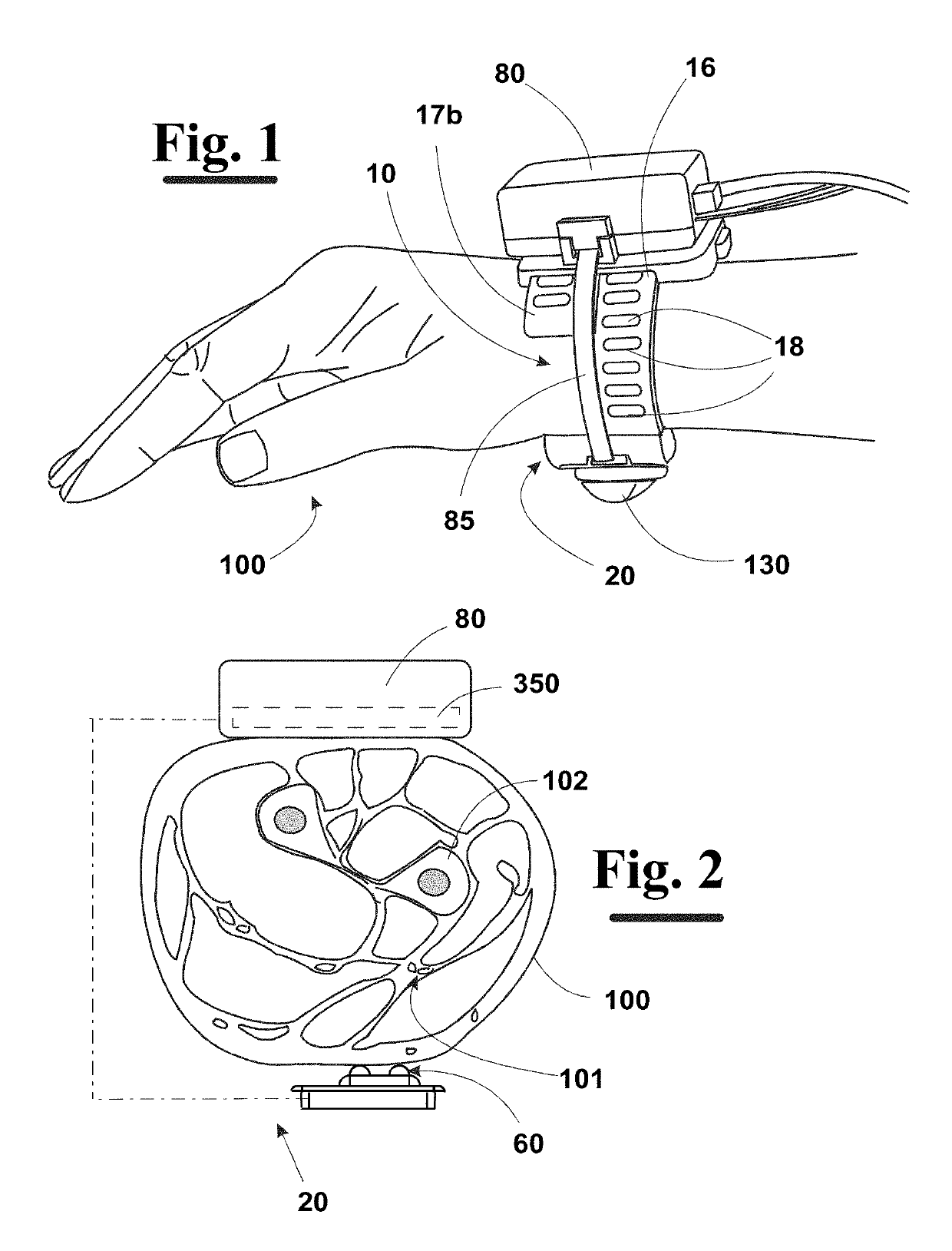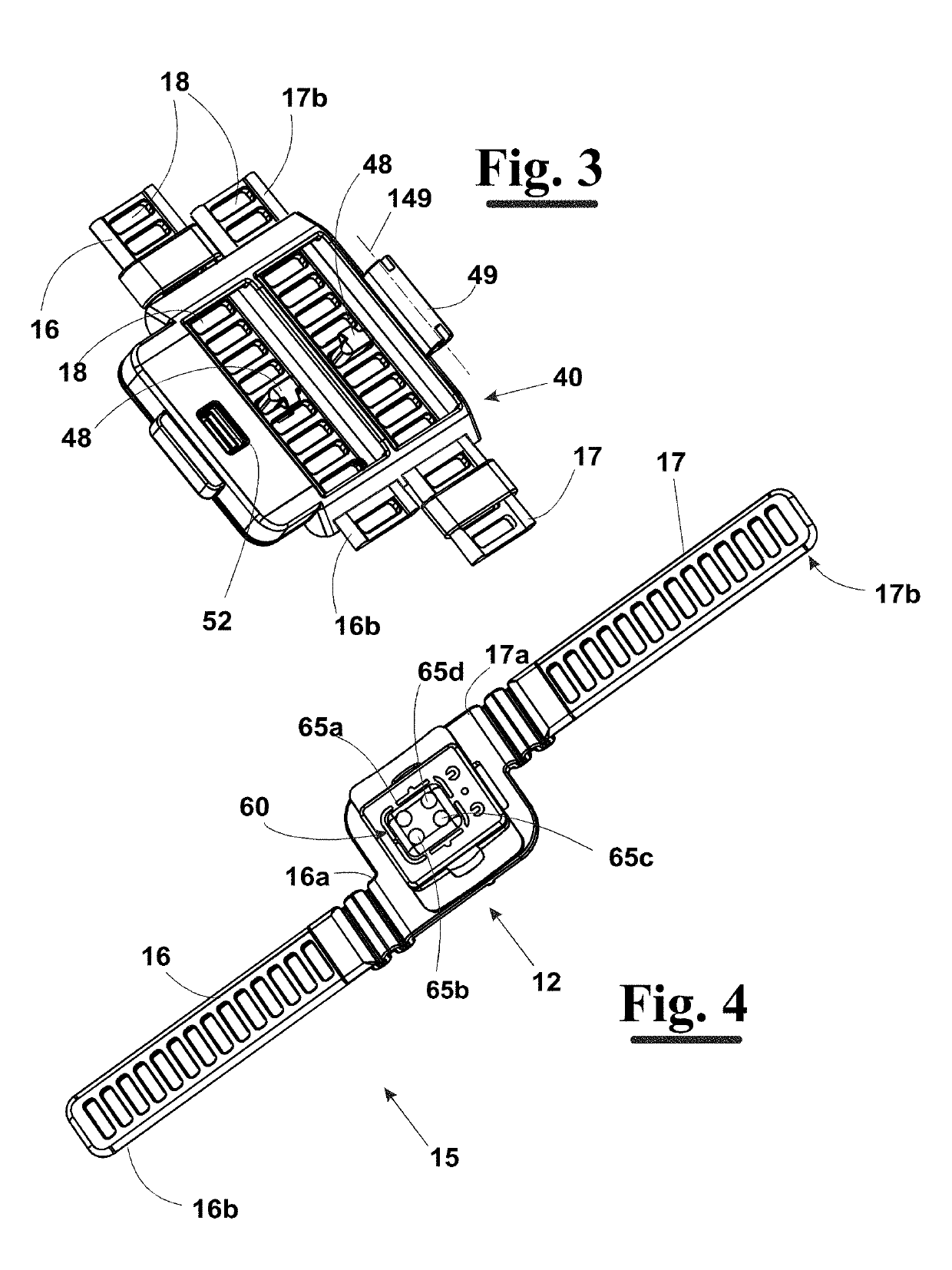Improved wearable tonometer
a tonometer and wearable technology, applied in the field of medical science, can solve the problems of artery signal loss, loss of signal, and affected by background errors, and achieve the effect of improving the sensibility of the sensor and increasing the ratio between the detected signal and the nois
- Summary
- Abstract
- Description
- Claims
- Application Information
AI Technical Summary
Benefits of technology
Problems solved by technology
Method used
Image
Examples
Embodiment Construction
[0067]With reference to FIG. 1, an improved tonometer 1 for continuously monitoring the arterial blood pressure of a patient for a predetermined period of time, comprises a bracelet 10 configured in such a way to be applied to a wrist of the patient 100. The tonometer 1 provides, furthermore, a detection group 20 mounted on the bracelet 10 and arranged, in operating conditions, to detect a pressure signal. As diagrammatically shown in the FIGS. 11 and 12, the detection group 20 comprises at least 2 pressure sensors 25, for example of piezoresistive, or piezoelectric type, arranged to detect a respective pressure signal associated to the blood pressure wave of the patient 100. More precisely, at least a pressure sensor 25 of the detection group is positioned, in use, in proximity of the radial artery of the patient 100, at the opposite side of the radial bone. More in detail, the sensors 25 are arranged to provide a pressure signal when the detection group 20 detects the differences ...
PUM
 Login to View More
Login to View More Abstract
Description
Claims
Application Information
 Login to View More
Login to View More - R&D
- Intellectual Property
- Life Sciences
- Materials
- Tech Scout
- Unparalleled Data Quality
- Higher Quality Content
- 60% Fewer Hallucinations
Browse by: Latest US Patents, China's latest patents, Technical Efficacy Thesaurus, Application Domain, Technology Topic, Popular Technical Reports.
© 2025 PatSnap. All rights reserved.Legal|Privacy policy|Modern Slavery Act Transparency Statement|Sitemap|About US| Contact US: help@patsnap.com



